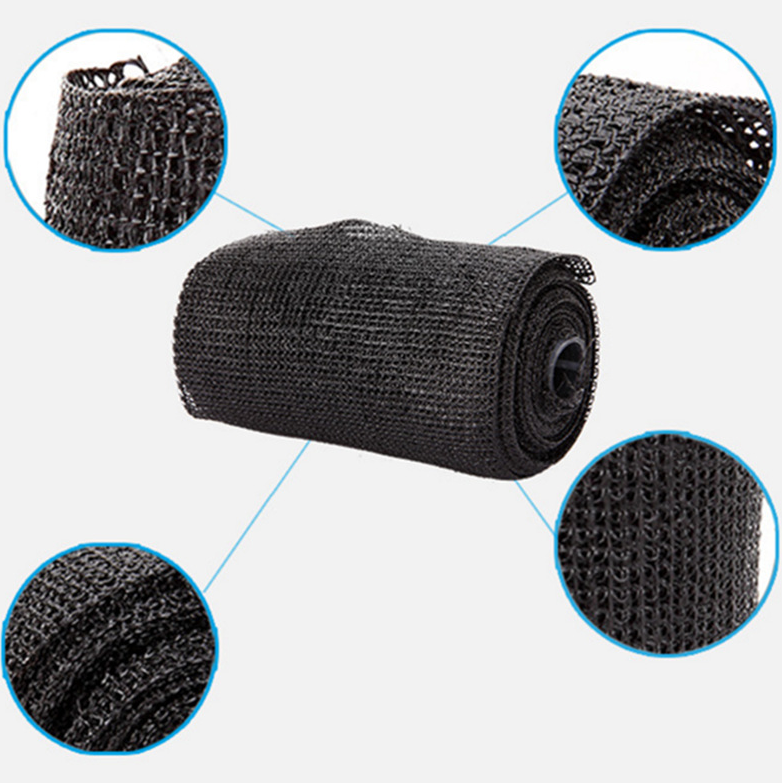Understanding the Types of Insulation Tape
Insulation tape is an essential item in both electrical and general repair work. It serves multiple purposes, such as insulating electrical wires, bundling cables, and providing a protective layer against moisture and environmental factors. With various types of insulation tape available in the market, understanding their unique properties can help you choose the right type for your specific needs. This article will explore the most common types of insulation tape, their uses, and the materials they are made from.
1. Vinyl Electrical Tape
Perhaps the most widely recognized type of insulation tape, vinyl electrical tape is a staple among electricians. It is known for its excellent electrical insulation properties and is typically rated for voltages up to 600 volts. Made from a flexible polyvinyl chloride (PVC) material, it comes in a variety of colors, allowing for differentiation in wiring. This tape is also UV resistant and can withstand extreme temperatures, making it suitable for both indoor and outdoor applications.
2. Fiberglass Tape
Fiberglass insulation tape takes durability to the next level. It is constructed from woven fiberglass filaments, allowing it to resist high temperatures and flames. This type of tape is ideal for covering wires and connections in high-heat environments, such as those found in automotive or industrial settings. Its strength makes it less flexible than vinyl tape, but it provides better protection against heat and abrasion.
Polyethylene (PE) tape is another popular choice, particularly for outdoor applications. It is resistant to moisture and provides a reliable barrier against water damage. This tape is not primarily designed for electrical insulation, but its adhesive properties and weather resistance make it advantageous for shielding electrical connections from the elements. Polyethylene tape is often used in construction and roofing applications as well.
insulation tape types

4. Rubber Insulation Tape
Rubber insulation tape is known for its high elasticity and stretchability, which makes it ideal for bundling wires and providing a tight seal over connections. This type of tape is highly conformable to irregular shapes, ensuring comprehensive coverage. It is often used in automotive applications and electrical work where moisture is a concern. Rubber tape is also self-fusing, meaning it can bond to itself without the need for adhesives, forming a waterproof barrier.
5. Thermal Insulation Tape
In addition to electrical insulation, there is also thermal insulation tape designed to protect surfaces from heat. Made from materials like silicone or fiberglass, this tape can withstand extreme temperatures and is often used in HVAC systems, piping, and industrial equipment where thermal efficiency is important. It helps in preventing heat loss and maintaining optimal performance in various applications.
6. Conductive Tape
Unique among insulation tapes, conductive tape serves a different purpose altogether. Made from materials that allow electricity to flow, this tape is typically used for grounding and shielding against electromagnetic interference (EMI). Although it does not serve as an insulator, it is critical in applications where electronic components need protection from interference or where grounding is necessary.
Conclusion
Selecting the appropriate insulation tape is vital for ensuring the safety and longevity of electrical systems and repairs. Each type of tape has its unique benefits, from the versatility of vinyl tape to the heat resistance of fiberglass and thermal insulation tapes. By understanding the different types of insulation tape available, you can make informed decisions that will enhance the performance and reliability of your projects, whether you are a professional electrician or a DIY enthusiast. Investing time in selecting the right insulation tape can save you from potential electrical hazards and ensure successful outcomes in your repair and construction endeavors.
-
Versatility with Tape Electrical InsulationNewsJun.09,2025
-
Floor Marking Tapes For WareHouseNewsJun.09,2025
-
Enhance Your Projects with PVC Electrical TapesNewsJun.09,2025
-
Enhance Your Projects with Automotive Wiring Harness TapeNewsJun.09,2025
-
Enhance Your Automotive Fabric TapesNewsJun.09,2025
-
Enhance Electrical Projects with Cambric TapeNewsJun.09,2025
